 PART UNO:
PART UNO:
15 Things To Do in Madrid

When someone says I’m heading to Madrid! What is the first thing that comes to mind or the first image that floats-up in your eyes? Of bright cloudless blue skies and baroque buildings or are you immediately transported to the football game going on live, hearing the crowd cheer?
After all is it not the birthplace of not one, but two powerhouse football teams? In Fact the mere mention of Madrid transports those who have been there with the sight, sound and smell of the city. One can’t help but sigh and perhaps mentally start planning for round two!
But for those who have not been, don’t worry we have a list of 15 things to do in Madrid for you! Either you are a traveler which do not know where to start or the type who wants to do everything and go everywhere at once in Madrid.
Madrid has got much more to offer, being the capital city of Spain and the third-largest city and metropolitan area in the European Union.
It’s a romantic twist of bygone eras and modern upbeat, after all Spanish being the language of love makes it easy to fall in love with Madrileños. Here are 15 more reasons to fall in love deeper with Madrid …….
1. UNESCO Cultural Heritage Monastery of San Lorenzo – The Royal Seat of Spain

UNESCO Cultural Heritage Monastery of San Lorenzo
Approaching the 1984 gazetted UNESCO heritage of “The Royal Site of San Lorenzo de El Escorial”, the sight that greets you will simply take your breath away, the magnificent Baroque style architecture just 50 minutes drive from Madrid. Designed and overseen by Juan Bautista de Toledo under the watchful eye of King Felipe II who championed this work of art which serves a higher purpose.
Today when you stand at its gates, one can’t help but to wonder about the engineering achievement, not to mention its planning of eleven courtyards with its own sacred purpose and functions. Walking down the sun-lighted aisle where King Felipe II and his courts has thread towards the Basilica Monumental the main monastery, upon entering visitors are subdued in awe, speaking in hushed tones, looking up you can see the work of art.
It also acts as the Royal summer residences consisting of the private King’s Garden, the Friars’ Garden and the Convalescents’ Gallery which King Felipe II personally see to it and a spectacular Royal Library for every book lover. Last but not least, one cannot miss exploring Pantheon Real the Royal mausoleum, here we can find buried Spanish monarchs of the houses of Austria and Bourbon. Speaking volumes of the King of Spain’s Royal lines.
A city within a city, nestled by the small quaint township of San Lorenzo de El Escorial which has retained its authenticity till today.
2. Explore Town of San Lorenzo de El Escorial
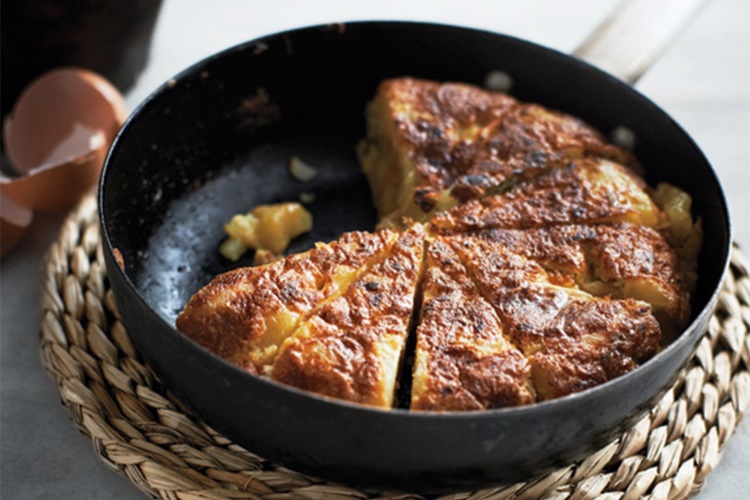
The local pincho de tortilla (potato omelet portion) a traditional recipe to residence of San Lorenzo de El Escorial.
When you have arrived at the authentic town of San Lorenzo de El Escorial, do not just fleet by after visiting the Royal Seat of San Lorenzo El Escorial. Perhaps you might want to spend a night or two, taking time to explore this quaint little town which holds one of the most revered architecture in Spain. Choose a room on the highest floor ie: Hotel San Lorenzo Suites or similar hotels which overlook the ancient rooftop of shops and houses, towards spectacular a view in-line with the Monastery of San Lorenzo against the Mount Abantos as backdrop.
Perhaps on the following day, climb the hill where King Felipe II used to watch the construction of the Monastery from a privileged position. He even has his own chair made out of a rock which is still there! When you reach it, perhaps relieve in your mind as if you are the Monarch himself, looking with pride towards his Kingdom and all that he has achieved and more.
After the climb, wander through the sunlit square and the many authentic restaurants, wind down with a glass of wine and the local pincho de tortilla (potato omelet portion) a traditional recipe to residence of San Lorenzo de El Escorial. Should most certainly sample the cuisine at its birthplace.
3. The Palacio Real de Madrid (Royal Palace of Madrid), Aranjuez
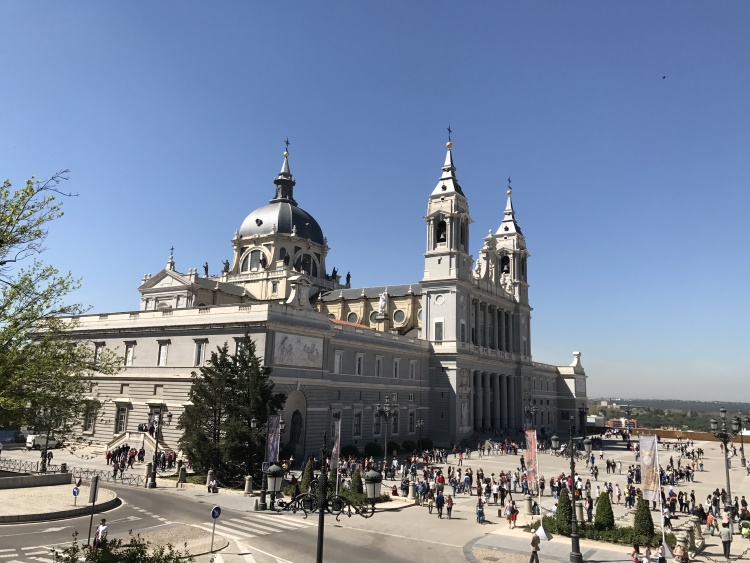
Aranjuez The Palacio Real de Madrid (Royal Palace of Madrid)
If you are a lover of Neo-classical architecture and art, a trip to the Royal Palace will quench your thirst for it, although some may feel it belongs more to Baroque era. Comes as no surprise, the palace itself dates back to the year 1561 when King Felipe II commissioned its construction, works continued during the reign of King Philip V and coming to completion under King Ferdinand V. Some would say we are lucky enough to be able to walk through the streets of Aranjuez leading to the palace rounds, others say it does not matter for it was way before. For until 1752, only royalty and nobility were allowed to dwell in the town what more stepping foot in the palace grounds.
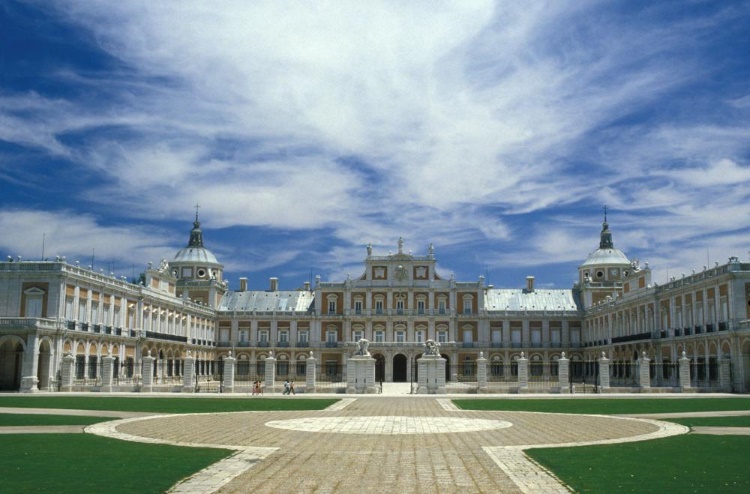
Plaza de Armas (the Parade Square) located in the front of the palace are designated areas for parades and ceremonies.
Today the palace is the official residence of His Majesty the King of Spain, but does not reside here. Acting as the spring residence, it is also where the grandiose of Plaza de Armas (the Parade Square) located in the front of the palace are designated areas for parades and ceremonies. If the outside facade of the palace is of grandiose, the insides are adorned with delicate works of art, boasting a collection of paintings by Caravaggio, Juan de Flandes, Velázquez and Goya. King Charles III had an eye for a different type of delicate artistry, as you step through the doors into the “Sala de Porcelana” or the Porcelain Room. You will simply be wowed and to think it has stood the test of time, the room is simply amazing. Fitted with eight large mirrors it was used as a games room and playground.

“Sala de Porcelana” or the Porcelain Room fitted with eight large mirrors
On the first Wednesday of every month, there is a solemn Changing of the Royal Guard, a 40-minute ceremony featuring 400 people and 100 horses. Perhaps you could arrange your visit to coincide with the event or perhaps you are an ignorant but very lucky visitor witnessing the age old tradition.
4. The Royal Estate of Aranjuez in the past, famed for its gastronomy and orchards of asparagus and strawberries.
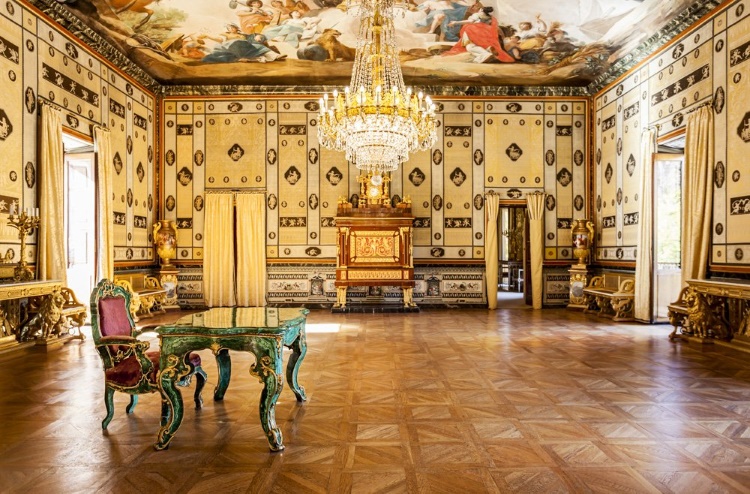
Even though it is known as an orchard, Casa De Labrador is equally as impressive within.
Aranjuez is also famed for its orchards, owed due to the fertile soil and the river Tagus which flow through the castle lands. The Casa Del Labrador (Labourer’s Cottage) is a small palace in one of the gardens of the Royal Palace of Aranjuez. with its variety of vegetables and fruits. The tradition has continued and today Aranjuez is famed for orchards which produce asparagus and the famous large “Mariguin” strawberries.
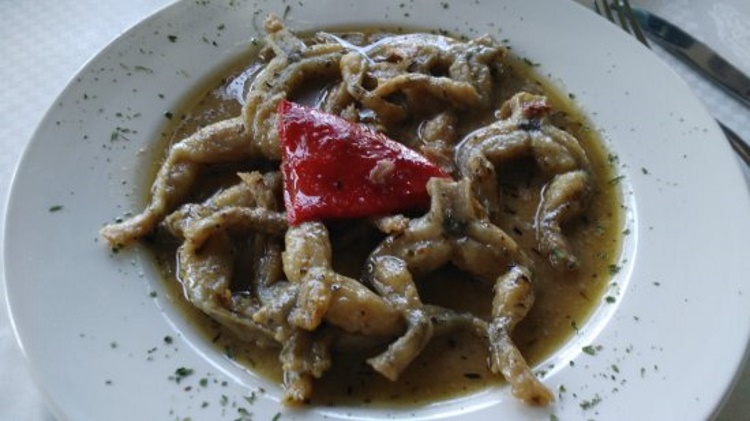
Frog legs found at Restaurant El Rana Verde, suggested by many travelers who have had the opportunity to dine there.
Gastronomy is an art worth unto itself, here at the heart of the royal estate, one can explore the past palate of Kings and Queens of Spain to the palate of commoners. It might not have crossed one mind, but there is a secret delicacy of Aranjuez the famous dish of frog legs. Hunt down these must try cuisine at popular restaurant El Rana Verde for their garlic frog legs.
5. Madrid, King of Football
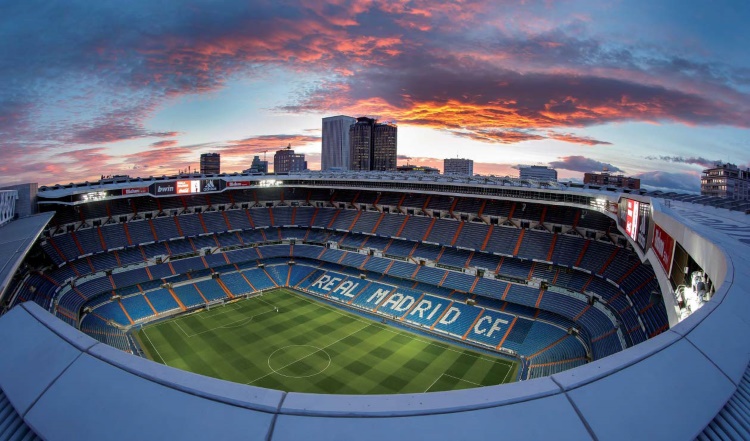
Santiago Bernabeu Real Madrid Stadium. Home to the Kings of Football.
If you are not a football fan you will be converted into a believer upon visiting the holy grail of the two most prominent stadiums home to La Liga football club giants Real Madrid and also its successful hometown rival Atlético Madrid. For the fans, what more is there to say? This is sure the main highlight of each and every football fan’s dream!
Crowned the best team of the 20th Century as per FIFA, Real Madrid FC in recent news around the world were hailed as the Real King of Europe according to their fellow football subjects or better known as Madridistas!
Literally live, eat and breathe football, the people of Madrid are very proud of their heritage. You can see grown man cry either in joy or in defeat at this very arenas countless time! First of all you must start with a tour around the museums of the most successful club like Museum of the Real Madrid located within the sacred confines of Santiago Bernabeu stadium. Do you know the Madridistas are also sometimes called Meringues? Due to the nuclear white equipping.
There are specialized tours arranged where you cover the highlights such as the Real Madrid dressing room and the tunnel, dugouts and pitch areas as well as presidential box and etc. Of course at the end of the tour don’t forget to visit the Official Store and bring home a lasting tangible magic.
Many visitors take this chance to pay homage to the Vicente Calderon Stadium, home to Atlético Madrid or commonly known as “colchoneros” due to their red and white striped T-shirts, compared to being the same colors as old-fashioned mattresses in Madrid. For it is very rare that there are two football giants in one town! Lady luck is shining on you if so happen your visit coincide with a match, join in the solemn initiation of your first match experience with the rest of the people from Madrid!
Taste and remember the sights and sounds and emotions which run high with every game. Come away with that sense of “forever changed” in the way you watch a football match on screen. This I can assure you! Don’t forget also about the Women’s Football league which is also participated by Atletico de Madrid and Rayo Vallecano.

Even when you walk into an emapty stadium, you can hear the crowd roar …
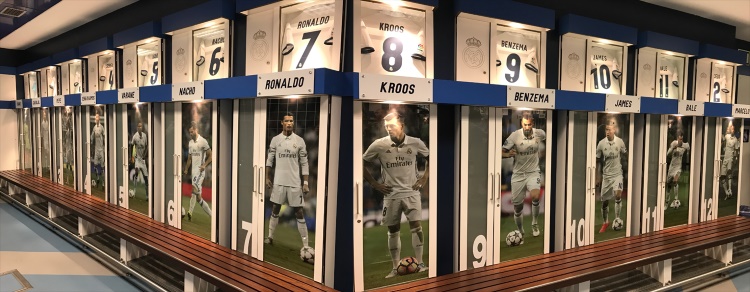
This is where the stars get ready to play ….
Stay tuned for PART DOS (Part 2)
Source from:Comunidad De Madrid




















